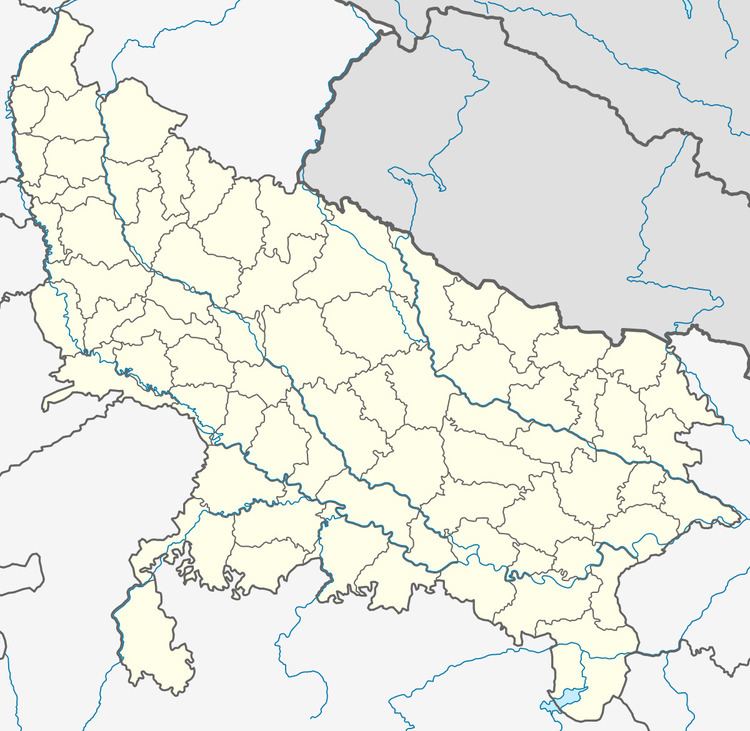Vehicle registration UP Elevation 178 m Local time Saturday 8:52 PM | Time zone IST (UTC+5:30) Website up.gov.in Population 17,451 (2001) | |
 | ||
Weather 23°C, Wind NW at 5 km/h, 46% Humidity | ||
Jalali is a town and a nagar panchayat in Aligarh district in the Indian state of Uttar Pradesh.
Contents
Map of Jalali, Uttar Pradesh 202128
Geography
Jalali is t 27.87°N 78.27°E / 27.87; 78.27. It has an average elevation of 178 metres (583 feet).
History
Jalali was a separate Pargana until 1862 which later was divided into Koi, Gangiri and other Parganas. Jalali is an ancient and historical town in the district of Aligarh and is known for its culture and traditions. Formerly known as Nilauti, Jalali was founded by Jalaluddin Khilji during the reign of Ghiyas ud-din Balban.
One of the oldest inhabited sites in the district of Aligarh, Jalali is has been famous for its history and as one of the oldest communities of Saiyyids. Jalali was under the influence of both Mughals and Britishers.
Its history can be traced back to the 16th century (1628-1658) when Saiyyids migrated from Srinagar, Kashmir and settled down here. They are descendants of Shah-e-Hamdan Ameer Kabir Sayyid Ali Hamdani, an Islamic scholar. The great grandson of Ameer Kabir Sayyid Ali Hamadani, Sayyid Kamaluddin Hamadani, was the first Sayyid to migrate and settle down in Jalali. He then got married to the daughter of Qazi of Jalali. Most of the current Sayyids in Jalali are descendants of Ameer Kabir Sayyid Ali Hamadani. Syeds of Jalali were well educated and acquired good positions in Civil Services and Army of India. Sayyids owned the majority of agricultural and residential lands in and around Jalali. Many adjutant villages are named after Sayyids of Jalali, e.g., Nagla Ausaf Ali which is named after Sayyid Ausaf Ali, Nagla Mehdi Ali, etc.
Jalali has good examples of old Mughal architecture. Though Sayyids were the most influential and powerful community in Jalali, they maintained religious and social harmony with other residents, and all were benefited with education and rich culture of Sayyids. Sayyid have been known to bring
Jalali has been an active contributor in the development of the Urdu language. It produced a poet of international fame: Ustad Qamar Jalalvi. Some other well-known poets of Urdu who emerged from Jalali are Mohabbat Jalalvi, Peer Mohammad Gauhar Jalalvi, S. Shabber Husain Saher Jalalvi, S. Sajjad Hussain Hadaf Jalalvi, S. Ali Baqar Chacha Jalalvi (known for his humorous poems) and Sayyid Afsar Ali Baqa Jalalvi. Baqa Jalalvi, one of the greatest poets, wrote some marsiyas, nauhas and salams. His most well known marsiya is "Uffaqe shaam se utthi jo ghata zulmat ki". His father Sayyed Zille Hussain Fiza wrote a well-known marsiya "Andaleebe gule gulzaar risalat hun mein". He edited famous salam composed by Dilgeer: "Hai salaam us per jo baikas be padar be yaar tha".Another Marsiya composed by Sayyid Zille Hussain was "Hinda ne Jab ke Khwab Sunaya Yazeed ko".
Imambaras and mosques
Jalali has many imambaras and mosques. One of the finest imambaras in Jalali is the Imambara of S. Farzand Ali which is over 200 years old. It is an imposing structure with a mosque inside. It can accommodate more than 5,000 persons at a time. In addition, women and children gather on the terrace of the imambara and the mosque in large numbers on 9th of Maharram.
An important landmark in Jalali is the historic Jama Masjid that is taken care by Sayyids of Jalali. It was built by Sultan Ghiyasuddin Balban and is over 700 years old. The masjid bears an inscription with the name of Balban dated 665 Hijri or 1267 AD. The mosque is well maintained and is looked after by a trustee appointed by Shia Waqf Board, Lucknow. The photograph of the mosque and its brief history along with the inscriptions of Sultan Balban, Mohammad Shah and Jalaluddin Akbar was published in the Archaeological Survey of India, 1936. The mosque was renovated and rebuilt by Haji Syed Mehdi Ali of Jalali in 1901. The original mosque had one dome. Two more domes were built by Haji Mehdi Ali who also added a golden kalas on top of each. An account of the contributions of Haji Mehdi Ali is engraved in Persian on the marble stone which forms part of the middle arch of the mosque. In 1826, the arch in the middle of the mosque near mimbar was built by Sayyid Ahmed Hussain. An engraved stone just above the arch gives complete details.
Agriculture
Jalali is famous for its fertile agricultural lands. The name of Jalali was mentioned by Ibn Battuta in one of his famous travelogues, Rihla. It is also known by the name of S. Mohammad Husain Qamar Jalalvi, who paid a tribute to Jalali in one of his couplets:
"Her sans ghaneemat hey mera ahl-e-watan ko / Duniya mein Jalali Ki hawa bandh raha hun". (All India Mushaira at Aligarh in 1954)